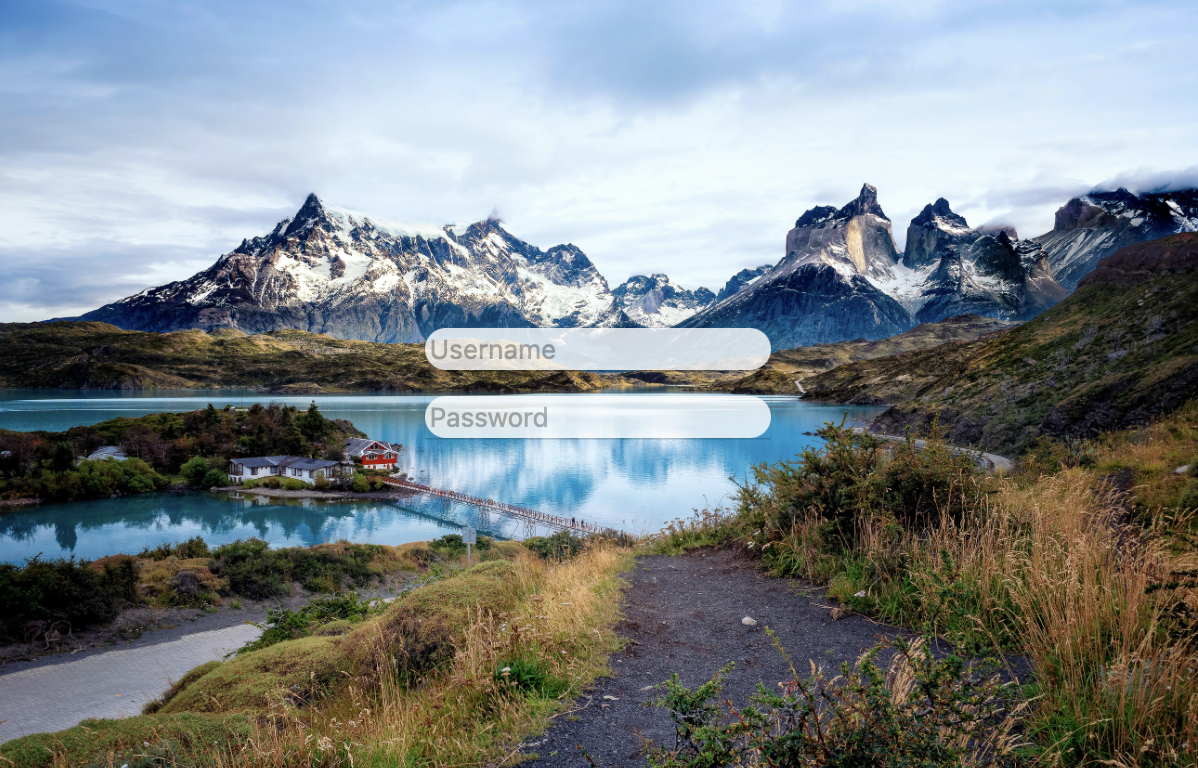View Opacity
To enhance accessibility, create dimming effects, visually appealing transitions and hover effects, or improve user interaction, we can use the "opacity" property. It's value is in range from 0 to 100 percent, where 0% means that the view is fully transparent.
| Property | Type | Description |
|---|---|---|
| "opacity" | float |
Degree of the view opacity |
As an example to demonstrate this property lets have a look at the login screen of the application where input fields for the user name and password will be semi-transparent. We'll first implement it using the Golang and then show how to use that property in the resource file.
Go
view := rui.NewGridLayout(session, rui.Params{
rui.Width: rui.Percent(100),
rui.Height: rui.Percent(100),
rui.CellVerticalAlign: rui.CenterAlign,
rui.CellHorizontalAlign: rui.CenterAlign,
rui.Background: rui.NewBackgroundImage(rui.Params{
rui.Source: "background.jpg",
rui.Fit: rui.CoverFit,
}),
rui.Content: rui.NewListLayout(session, rui.Params{
rui.Orientation: rui.TopDownOrientation,
rui.Opacity: 0.8, // Setting an opacity of the view
rui.Content: []rui.View{
rui.NewEditView(session, rui.Params{
rui.Radius: rui.Em(1),
rui.Hint: "Username",
}),
rui.NewEditView(session, rui.Params{
rui.Radius: rui.Em(1),
rui.Hint: "Password",
rui.EditViewType: rui.PasswordText,
}),
},
}),
})
When describing "opacity" property in resource description file we can use either string representation of the float or integer type.
Below is the same login view but created in resources:
RUI
GridLayout {
width = 100%,
height = 100%,
background = image {
src = "background.jpg",
fit = cover,
},
cell-vertical-align = center,
cell-horizontal-align = center,
content = ListLayout {
opacity = 0.8, // Setting an opacity of the view
gap = 0.5em,
orientation = up-down,
content = [
EditView {
radius = 1em,
hint = "Username",
},
EditView {
radius = 1em,
hint = "Password",
edit-view-type = "password",
}
]
}
}
Depending on the browser we ran our application on the results may be different but here is the variant where we ran it in Safari:

The library has a convenient global function of getting back the value of the view opacity called GetOpacity().
Go
opacity := rui.GetOpacity(rootView, "view-id")
// Do something with the value
To get more information on how to work with view properties please check Property System tutorial.

